Related Research Articles
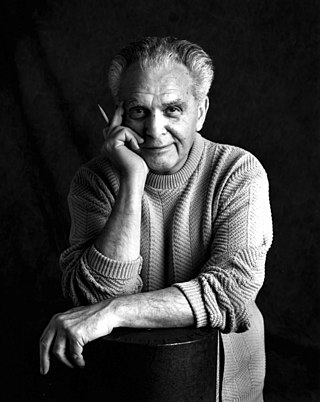
Jack Kirby was an American comic book artist, widely regarded as one of the medium's major innovators and one of its most prolific and influential creators. He grew up in New York City and learned to draw cartoon figures by tracing characters from comic strips and editorial cartoons. He entered the nascent comics industry in the 1930s, drawing various comics features under different pen names, including Jack Curtiss, before settling on Jack Kirby. In 1940, he and writer-editor Joe Simon created the highly successful superhero character Captain America for Timely Comics, predecessor of Marvel Comics. During the 1940s, Kirby regularly teamed with Simon, creating numerous characters for that company and for National Comics Publications, later to become DC Comics.

William Maxwell "Bill" Gaines was an American publisher and co-editor of EC Comics. Following a shift in EC's direction in 1950, Gaines presided over what became an artistically influential and historically important line of mature-audience comics. He published the satirical magazine Mad for over 40 years.
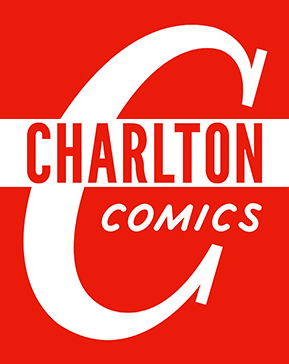
Charlton Comics was an American comic-book publishing company that existed from 1945 to 1986, having begun under a different name: T. W. O. Charles Company, in 1940. It was based in Derby, Connecticut. The comic-book line was a division of Charlton Publications, which published magazines, puzzle books, and briefly, books. It had its own distribution company.

Fredric Wertham was a German-American psychiatrist and author. Wertham had an early reputation as a progressive psychiatrist who treated poor black patients at his Lafargue Clinic at a time of heightened discrimination in urban mental health practice. Wertham also authored a definitive textbook on the brain, and his institutional stressor findings were cited when courts overturned multiple segregation statutes, most notably in Brown v. Board of Education.

Joseph Henry Simon was an American comic book writer, artist, editor, and publisher. Simon created or co-created many important characters in the 1930s–1940s Golden Age of Comic Books and served as the first editor of Timely Comics, the company that would evolve into Marvel Comics.
Sick is a satirical-humor magazine published from 1960 to 1980, lasting 134 issues.

An American comic book is a thin periodical originating in the United States, on average 32 pages, containing comics. While the form originated in 1933, American comic books first gained popularity after the 1938 publication of Action Comics, which included the debut of the superhero Superman. This was followed by a superhero boom that lasted until the end of World War II. After the war, while superheroes were marginalized, the comic book industry rapidly expanded and genres such as horror, crime, science fiction and romance became popular. The 1950s saw a gradual decline, due to a shift away from print media in the wake of television and the impact of the Comics Code Authority. The late 1950s and the 1960s saw a superhero revival and superheroes remained the dominant character archetype throughout the late 20th century into the 21st century.

The Fly is a superhero appearing in American comic books published by Red Circle Comics. He was created by Joe Simon as part of Archie's "Archie Adventure Series" and later camped up as part of the company's Mighty Comics line. He first appeared in The Double Life of Private Strong #1 ; however, his origin story and first "full-length" appearance were in Adventures of the Fly #1.

Seduction of the Innocent is a book by German-born American psychiatrist Fredric Wertham, published in 1954, that warned that comic books were a negative form of popular literature and a serious cause of juvenile delinquency. The book was taken seriously at the time in the United States, and was a minor bestseller that created alarm in American parents and galvanized them to campaign for censorship. At the same time, a U.S. Congressional inquiry was launched into the comic book industry. Subsequent to the publication of Seduction of the Innocent, the Comics Code Authority was voluntarily established by publishers to self-censor their titles. In the decades since the book's publication, Wertham's research has been disputed by scholars.
Sky Masters of the Space Force was an American syndicated newspaper comic strip created on September 8, 1958, by writer/penciler Jack Kirby and writer Dave Wood, featuring the adventures of an American astronaut. The strip stars the titular Major Skylar Masters—an American astronaut—and features his adventures in a fictionalized Space Race, including rocket launches, space stations, Moon landings, and double agents.
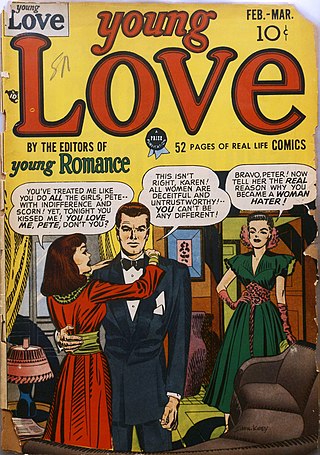
Young Love is one of the earliest romance comics titles, and was published by Crestwood/Prize and later sold to DC Comics.

Crestwood Publications, also known as Feature Publications, was a magazine publisher that also published comic books from the 1940s through the 1960s. Its title Prize Comics contained what is considered the first ongoing horror comic-book feature, Dick Briefer's "Frankenstein". Crestwood is best known for its Prize Group imprint, published in the late 1940s to mid-1950s through packagers Joe Simon and Jack Kirby, who created such historically prominent titles as the horror comic Black Magic, the creator-owned superhero satire Fighting American, and the first romance comic title, Young Romance.
The Association of Comics Magazine Publishers (ACMP) was an American industry trade group formed in the late 1940s to regulate the content of comic books in the face of public criticism during that time. It was a precursor to the Comics Magazine Association of America, and the ACMP Publishers Code served as the template for a more detailed set of rules enforced by the CMAA's Comics Code Authority.
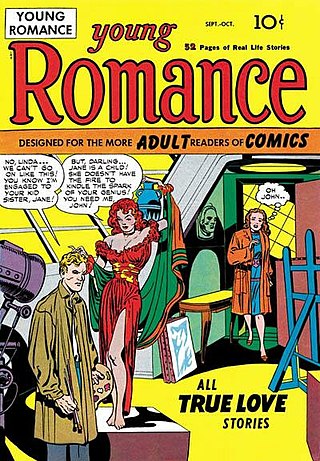
Romance comics are a genre of comic books that were most popular during the Golden Age of Comics. The market for comics, which had been growing rapidly throughout the 1940s, began to plummet after the end of World War II when military contracts to provide disposable reading matter to servicemen ended. This left many comic creators seeking new markets. In 1947, part of an effort to tap into new adult audiences, the romance comic genre was created by Joe Simon and Jack Kirby with the Crestwood Publications title Young Romance.

Young Romance is a romantic comic book series created by Joe Simon and Jack Kirby for the Crestwood Publications imprint Prize Comics in 1947. Generally considered the first romance comic, the series ran for 124 consecutive issues under Prize imprint, and a further 84 published by DC Comics after Crestwood stopped producing comics.
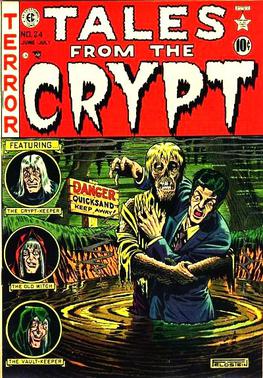
Horror comics are comic books, graphic novels, black-and-white comics magazines, and manga focusing on horror fiction. In the US market, horror comic books reached a peak in the late 1940s through the mid-1950s, when concern over content and the imposition of the self-censorship Comics Code Authority contributed to the demise of many titles and the toning down of others. Black-and-white horror-comics magazines, which did not fall under the Code, flourished from the mid-1960s through the early 1980s from a variety of publishers. Mainstream American color comic books experienced a horror resurgence in the 1970s, following a loosening of the Code. While the genre has had greater and lesser periods of popularity, it occupies a firm niche in comics as of the 2010s.

Jack Oleck was an American novelist and comic book writer particularly known for his work in the horror genre.
Arnold Book Company (ABC) was a British publisher of comic books that operated in the late 1940s and 1950s, most actively from 1950 to 1954. ABC published original titles like the war comic Ace Malloy of the Special Squadron and the science fiction title Space Comics, and reprints of American horror and crime titles like Adventures into the Unknown, Black Magic Comics, and Justice Traps the Guilty. British contributors to the company's titles include Mick Anglo and Denis Gifford. Arnold Book Company was closely connected to the fellow British comics publisher L. Miller & Son.
References
- 1 2 3 4 Simon, Joe; with Simon, Jim (1990). The Comic Book Makers. Crestwood/II Publications. p. 151. ISBN 1-887591-35-4. Reissued (Vanguard Productions, 2003) ISBN 1-887591-35-4. Page numbers refer to 1990 edition.
- 1 2 Beerbohm, Robert Lee. "The Mainline Story", Jack Kirby Collector #25, August 1999. Accessed March 26, 2008. WebCitation archive.
- 1 2 3 4 5 6 7 8 Ro, Ronin (2004). Tales to Astonish: Jack Kirby, Stan Lee and the American Comic Book Revolution. Bloomsbury USA. p. ??. ISBN 1-58234-345-4.
- ↑ Simon, p. 161
- ↑ Also spelled "Blyer" by Ronin. An Interim Report on "Comic Books and Juvenile Delinquency" listed Prize Comic Group as owned by "Michael M. Bleier" and "Paul Epstein"; Ron Goulart has an entry for "Teddy Epstein" in two of his comics histories, however.
- ↑ Mainline at the Grand Comics Database